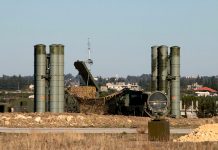
Today, the Chinese People’s Liberation Army Air Force (PLAAF) showcased its sixth-generation aircraft in flight, marking what can be considered its inaugural public appearance. However, emerging video footage suggests that Beijing may have revealed not just one, but two distinct sixth-generation platforms. Our analysis focuses on one of these, which offers a clearer design profile, allowing for a more thorough examination.
The aircraft in question appears to be one of China’s newest prototypes, potentially representing a future sixth-generation fighter with a pivotal role in upcoming combat operations. Its design emphasizes stealth capabilities, prioritizing reduced radar visibility and superior aerodynamic efficiency.
The triangular “flying wing” configuration bears similarities to Western designs such as the B-2 Spirit and the more recent B-21 Raider. However, this version is notably more compact, tailored for air-to-air combat and multi-role missions. This configuration’s aerodynamic characteristics provide several key advantages, particularly in terms of speed, maneuverability, and overall flight stability.
The triangular wing shape, commonly seen in modern fighter jets like the F-22 Raptor and Mirage 2000, enhances aerodynamic stability, especially at high speeds. The broad surface area and sharp attack angle reduce turbulence and air resistance, even at supersonic and hypersonic speeds. These design features contribute to lower drag, improving fuel efficiency and boosting the aircraft’s top speed.
At lower speeds, the triangular wings maintain excellent maneuverability, essential for agile combat scenarios. They provide increased lift at high angles of attack, reducing the risk of stall—a crucial advantage during close-quarters aerial engagements.
Moreover, the design mitigates turbulence and maintains stability, even under challenging atmospheric conditions, enhancing its performance in various operational environments, including high-altitude and high-temperature conditions.
The aircraft also incorporates two internal weapon bays, a common feature in stealth designs that allows for weapons to be carried without compromising the platform’s low radar signature. This suggests the potential for carrying long-range air-to-air missiles, such as Chinese variants of the AIM-260 or PL-15, alongside precision-guided munitions for ground strikes, positioning it for multi-role operations including air superiority and deep-strike capabilities.
The absence of visible engine nozzles is another striking feature of this aircraft, signaling significant advancements in infrared signature reduction. This design choice improves both stealth and aerodynamics by minimizing heat detection from infrared sensors and reducing drag caused by traditional nozzle designs. This stealth enhancement is critical in avoiding detection by both radar and infrared-guided missiles.
The integration of the engines within the aircraft’s structure further contributes to weight reduction and better aerodynamic performance, enhancing overall maneuverability and operational efficiency. This approach, seen in platforms like the B-2 Spirit and F-22 Raptor, provides strategic advantages in terms of radar invisibility and flight agility.
Additionally, the aircraft likely employs advanced sensor systems, including AESA radar and multi-spectral observation tools, which would enable it to detect and track a wide array of targets. The potential integration of artificial intelligence for semi-autonomous operations and network integration for coordinated operations with unmanned aerial vehicles (UAVs) suggests that this platform is designed for next-generation air warfare, where collaboration between manned and unmanned systems is becoming increasingly crucial.
While specific details remain limited, this aircraft underscores China’s intent to lead in the evolving global race for air dominance. Its capabilities could potentially challenge the U.S. Air Force’s NGAD program and other Western developments, intensifying the competition for future air superiority.




